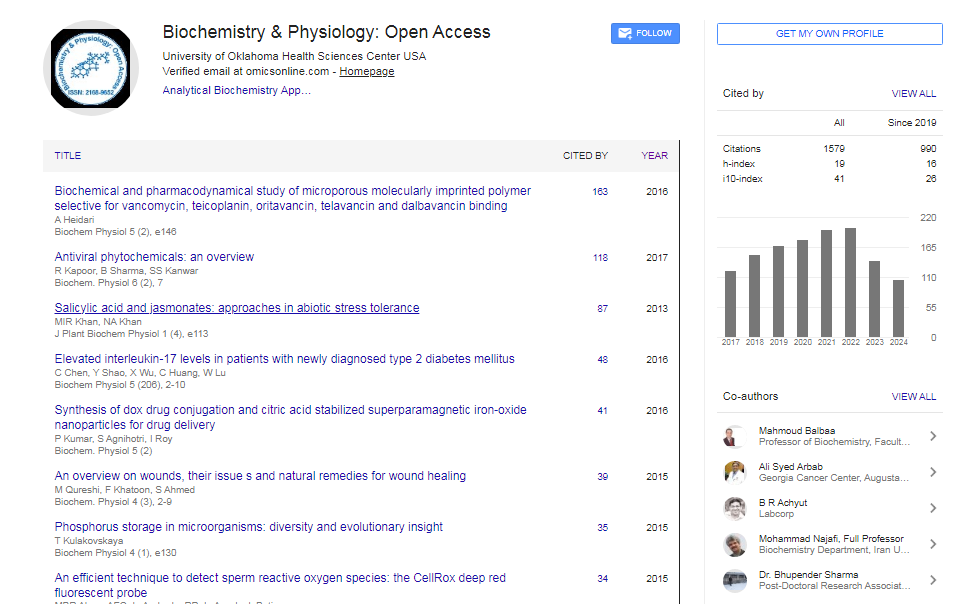The Effect of Gum Arabic on Cholesterol Synthesis and Serum Lipids in Atherogenic Rats
*Corresponding Author: Abeer Al-Otaibi, Department of Biochemistry, King Saud University,Riyadh, Saudi Arabia, Tel: 551933703, Email: Abeerotb12@gmail.comReceived Date: Aug 23, 2019 / Published Date: Aug 31, 2022
Citation: Otaibi AA (2022) The Effect of Gum Arabic on Cholesterol Synthesis and Serum Lipids in Atherogenic Rats. J Biochem Phys 11: 390.
Copyright: © 2022 Otaibi AA. This is an open-access article distributed under the terms of the Creative Commons Attribution License, which permits unrestricted use, distribution, and reproduction in any medium, provided the original author and source are credited.
Abstract
The current study was aimed to evaluate the effect of Gum Arabic (GA) as soluble dietary fiber on Normal Control (NC) and Atherogenic induced rats (AT). Male wistar rats with body weights (180 g-200 g) were divided into six groups each consisting of 8 rats: NC, NC treated with 3.75% GA, NC treated with 10% GA, AT group, AT group treated with 3.75% GA and last group AT rats treated with 10% GA. All NC and AT groups were kept on their specific diets for 2 weeks before oral treatment with GA which continued for six weeks. Body weights, food and water intake were recorded daily. Serum concentrations of TC, LDL, VLDL and TG were decreased significantly for all treated groups except NC treated with 3.75% GA that showed no significant difference in TC and LDL (P ≤ 0.001). Serum HDL levels were increased significantly for all studied groups, also serum glucose concentrations decreased significantly with increasing dosage of GA in all treated groups (P ≤ 0.001). Phospholipids showed no significant difference between all groups. HMGR was significantly diminished in AT group treated with 3.75% and 10% GA as it dropped from 5.94 ± 0.272 units/mg to 1.67 ± 0.151 unit/mg and 2.54 unit/mg ± 0.086 unit/mg respectively (P ≤ 0.001). On the other hand, no significant changes were observed in the enzyme activity of NC treated with GA 2.206 ± 0.085 unit/mg and 2.42 ± 0.005 unit/mg, respectively. Histopathology observations revealed that GA has no toxic effect on normal control treated groups, as their structures looked normal. As well, GA has tissue protective property through supporting healing of livers and preventing the inflammation and necrosis as that obviously appeared in AT

 Spanish
Spanish  Chinese
Chinese  Russian
Russian  German
German  French
French  Japanese
Japanese  Portuguese
Portuguese  Hindi
Hindi 